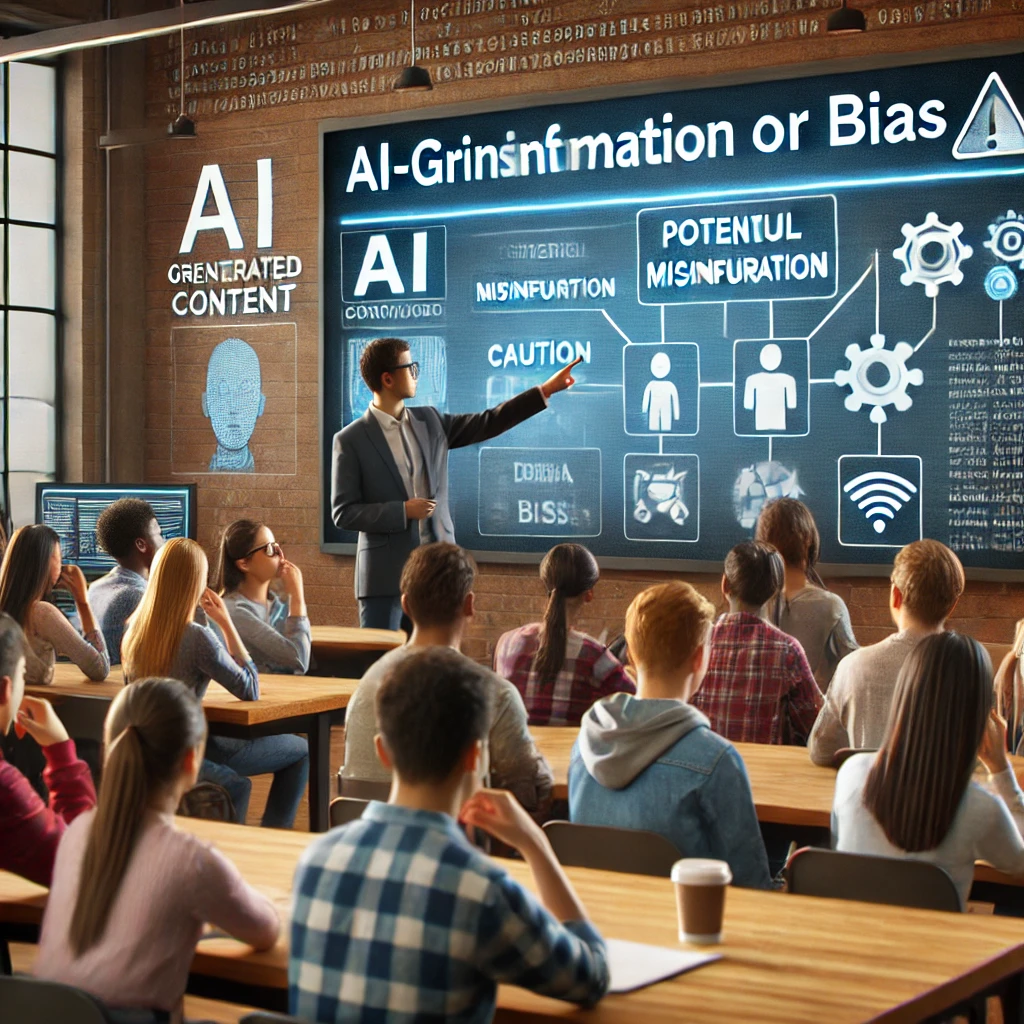GO AI MINDFULLY!
AI Tools for Educators
& Parents
Artificial intelligence is rapidly transforming our world, and our children are growing up in its midst. Are you prepared to help them navigate this exciting new landscape?
This website is your guide to understanding AI, exploring its potential in education and at home, and empowering kids to become responsible and informed users of this powerful technology.
AI Basics
Some basic concepts you should know about AI
AI (Artificial Intelligence) is when computers or machines are designed to think and learn like humans. They can recognize patterns, solve problems, and even make decisions based on data. Examples include chatbots, voice assistants like Siri, and recommendation systems on Netflix or YouTube.
– Automate tasks (grading, creating quizzes, organizing materials).
– Personalize learning (adapting lessons to each student’s needs).
– Provide instant feedback (helping students learn faster).
– Suggest resources (finding videos, articles, and exercises for your lessons).
– Assist with language barriers (translating text or speech).
– Misinformation – AI can sometimes give wrong or biased answers.
– Overdependence – Relying too much on AI may reduce critical thinking and creativity.
– Privacy concerns – Some AI tools collect personal data, which can be risky.
– Distraction – AI-powered apps or chatbots might be more entertaining than educational.
– Unfair learning – If not used properly, AI may help some students more than others, creating gaps in learning.
– Personalized Learning – AI can adjust lessons to match each student’s level and pace.
– Instant Feedback – Students get quick answers and corrections, helping them learn faster.
– Interactive Learning – AI-powered games, quizzes, and virtual tutors make learning fun.
– Accessibility – AI can assist students with disabilities (text-to-speech, speech-to-text, translations).
– Homework Help – AI chatbots and tools can explain concepts in simple terms.
– Improved Organization – AI can help students stay on track with schedules and reminders.
With AI, learning becomes more engaging, inclusive, and efficient!
– Educational Value – Does it support learning goals and curriculum?
– Age Appropriateness – Is it suitable for the students’ age and skill level?
– Ease of Use – Is it simple for both students and teachers to use?
– Accuracy & Reliability – Does it provide correct and unbiased information?
– Student Privacy & Safety – Does it protect student data and follow privacy laws?
– Engagement & Accessibility – Does it make learning fun and include all students, including those with disabilities?
– Cost & Availability – Is it free or affordable, and does it work on school devices?
Parent’s Corner
Ideas about how to talk with your children about AI and understand AI basics.

Featured Articles
This are some articles from our blog that could be interesting to read

AI is transforming education. However, as schools increasingly adopt AI-powered tools, concerns about student data privacy and ownership are growing.

AI’s rise comes with a wave of misconceptions, particularly the fear that AI will replace teachers. In this post, we’ll debunk that myth and explore how AI isn’t here to empower educators and parents alike.

AI is proving to be a game-changer for students with unique learning requirements. From personalized learning plans to assistive technologies, AI is helping educators and parents address challenges that have long hindered equitable access to quality education.
What They Say

Jonah Schwarz

Erin Lawrence


